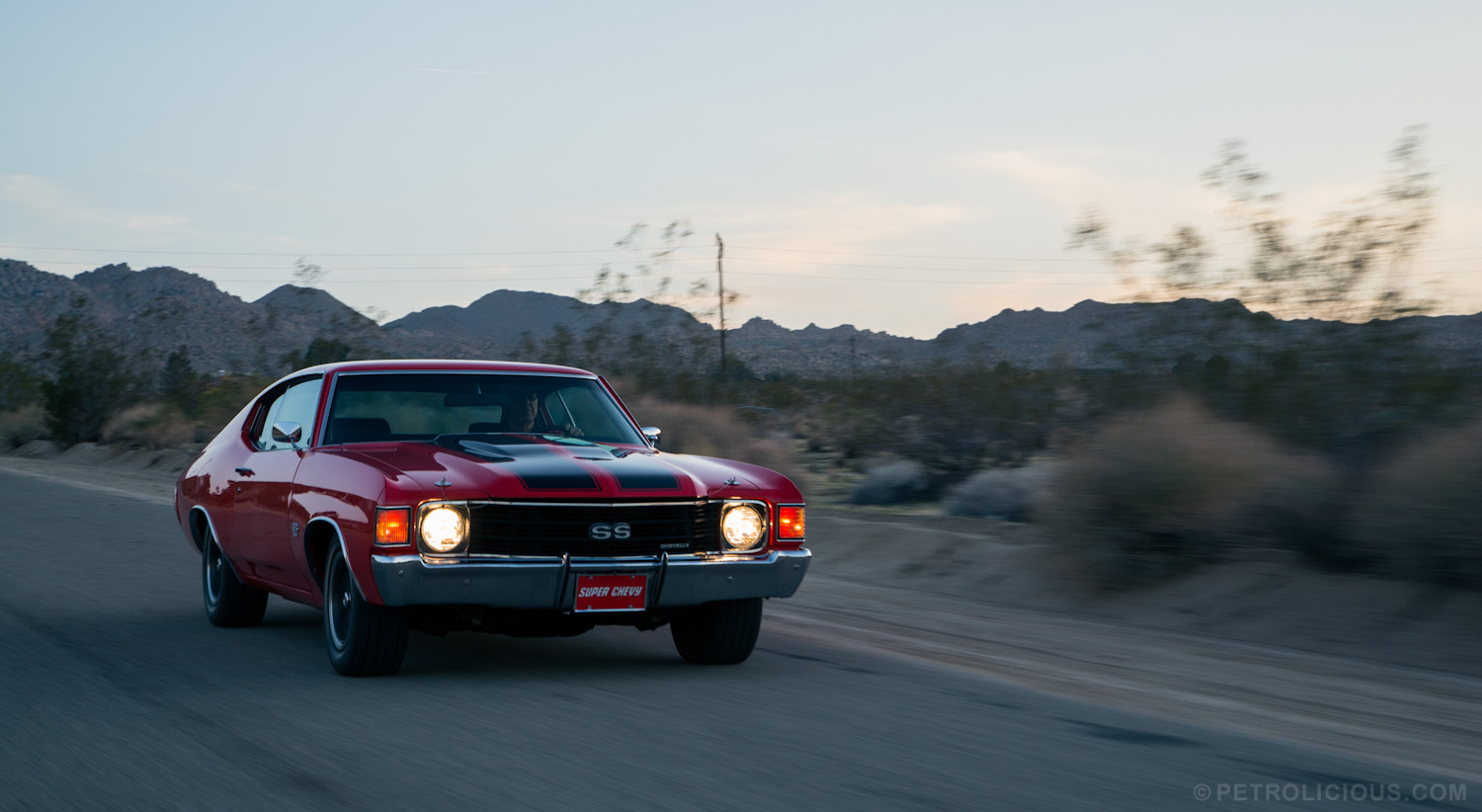
Photography by Josh Clason for Petrolicious
The Collector is a weekly series produced in association with Gear Patrol, where we discuss the car, and Gear Patrol discusses the essential gear inspired by the car. (Click here to see the rest of The Collector Series on Petrolicious.)
The Chevrolet Chevelle is pure, American unpretentiousness. It’s simple, straightforward, and designed to do one thing: cover the quarter-mile faster than anything else. The Chevelle belongs to GM’s A-body family, which was completely redesigned for the 1968 model year. More importantly, in 1970 GM finally lifted their ban on engines larger than 400 cubic inches (roughly 6.6L) and the Chevelle was available with a top-of-the-line 454 cubic-inch (7.4L) engine option, making 360hp (there was also a racing engine option, the LS6, that was supposedly conservatively rated at 450hp!). This move was a response to Chrysler’s dominance not only in drag racing, but also in terms of raw numbers. For GM, it was a question of street cred. This was, after all, the zenith of the horsepower wars, they had to become competitive to stay relevant.
In terms of appearance, the main difference between the 1971 and 1972 model years is the grille design. They both feature single headlights on each side, rather than the dual units that the Chevelle had been equipped with since its inception. But the ’71 has a single chrome bar connecting them rather than the ‘72’s two-bar design. So why do pre-1972 models have a perceived superiority?
It’s actually rather simple, according to Mr. Brian Rabold, Hagerty’s Valuation Services Senior Manager, “As 1972 was the first year of reported net horsepower ratings rather than gross, the ‘72 Chevelle has historically lagged behind the 1971 in price by a small amount.” However, the perception is mistaken as he explains, “The ownership experience is much closer to even, however, given that the power difference was felt mostly on paper.”
Whether or not this car is for you is an entirely different question. Over the past five years most American muscle cars have seen their values remain fairly flat without too much fluctuation up or down. But trying to forecast the market is a fool’s game, and as with any collectable, you should only buy what you love. So if you’re looking for a no-nonsense, straight-line terror and don’t care about conventional (oft-mistaken) wisdom then, Brian says, “the 1972 Chevelle is a solid buy for someone who loves the look and feel of 1970-71 Chevelles but not necessarily the price.”
If you’d like to see a 1972 Chevy Chevelle in action, watch our last video, here.
Special thanks to Mr. Brian Rabold and Hagerty for their contribution as well as Mr. Mark & Mrs. Shirley Lundquist, for allowing us to photograph his Chevelle.
CHEVELLE’S COUNTRY COUSIN
If the name Chevelle is supposed to sound regal, then every regal family must also have its backwoods cousin. Believe it or not, the infamous Chevy El Camino was at one time part of the Chevelle family. Categorized as a “coupe utility vehicle”, the El Camino was inspired by an Australian farmer’s need to have a car that could pull double duty, hauling pigs during the week and then for gettin’ to church on Sunday.
Written by Amos Kwon of Gear Patrol

























